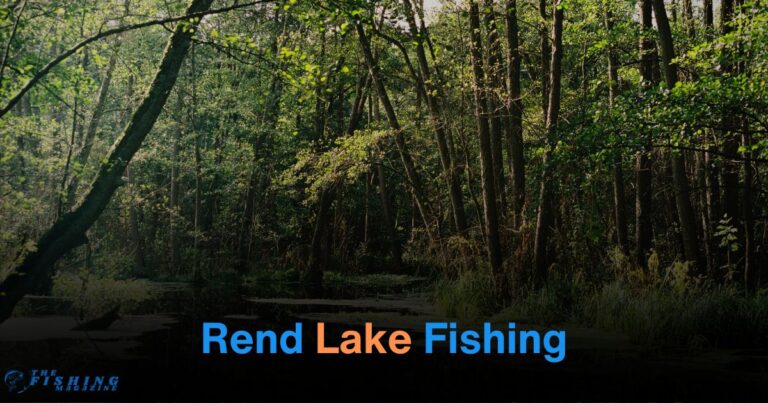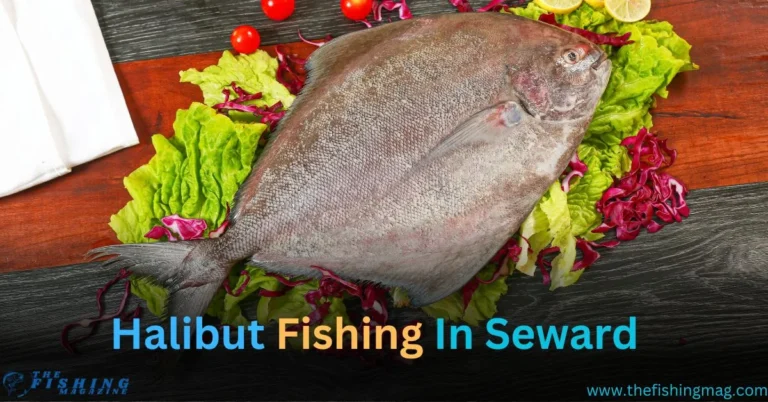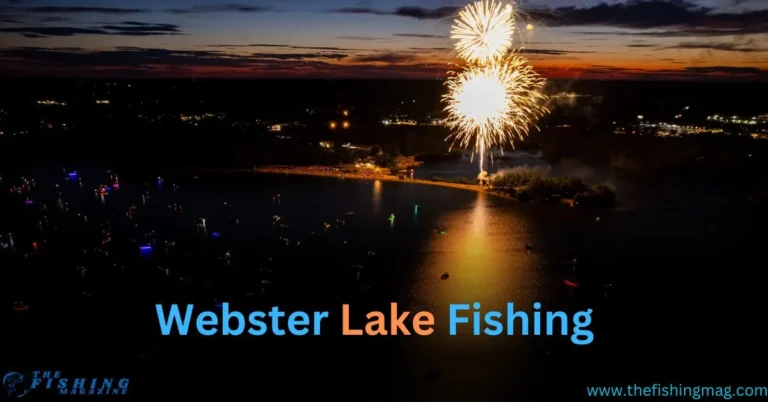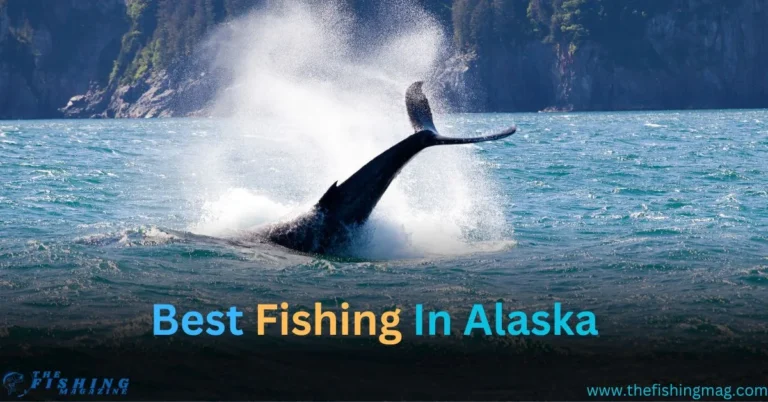Salmon fishing in Alaska is more than just a sport; it’s a tradition, a way of life, and an adventure that every angler dreams of experiencing. When it comes to fishing destinations, few places can rival the allure of Alaska.
With its vast wilderness, pristine waters, and abundant wildlife, Alaska offers an unparalleled fishing experience. Among the various fish species that draw anglers to the Last Frontier, salmon holds a special place.
In this comprehensive guide, we’ll explore everything you need to know about salmon fishing in Alaska. From the different species of salmon and the best times to catch them, to tips on choosing the right gear and the top fishing spots,
This post will equip you with the knowledge to make your Alaskan fishing trip a success. Whether you’re a seasoned angler or planning your first trip, you’ll find valuable insights and practical advice to help you make the most of your time on the water.
Introduction
Alaska’s reputation as a fishing paradise is well-deserved. With thousands of miles of coastline, countless rivers and streams, and a thriving ecosystem, it’s no wonder that anglers from around the world flock to this northern wonderland.
Salmon fishing is particularly popular, thanks to the state’s five species of Pacific salmon: Chinook (King), Coho (Silver), Sockeye (Red), Pink (Humpy), and Chum (Dog).
But what makes salmon fishing in Alaska so unique? It’s the combination of the stunning natural environment, the challenge of hooking these powerful fish, and the satisfaction of bringing home a prized catch.
Whether you’re fishing from a remote riverbank, casting your line from a charter boat, or wading into a glacial-fed stream, the experience of salmon fishing in Alaska is one that will stay with you forever.
In this guide, we’ll take you through the key aspects of salmon fishing in Alaska, from understanding the different salmon species and their seasonal runs, to selecting the right gear and techniques, and exploring the best locations to cast your line.
The Five Species of Salmon in Alaska
There are five types of salmon fish list down.
1. Chinook (King) Salmon
Overview:
Chinook salmon, also known as King salmon, are the largest and most prized of Alaska’s salmon species. They can grow to over 100 pounds, although the average catch is typically between 20 and 50 pounds. Kings are known for their powerful runs and deep dives, making them a challenging and rewarding catch for any angler.
Best Time to Catch:
Chinook salmon runs vary by location, but they generally occur from May to July, with peak season in June. Some rivers have later runs, extending into August.
Where to Fish:
Popular spots for Chinook salmon include the Kenai River, the Kasilof River, and the Nushagak River. Coastal areas like Southeast Alaska and the Cook Inlet also offer excellent opportunities for targeting Kings.
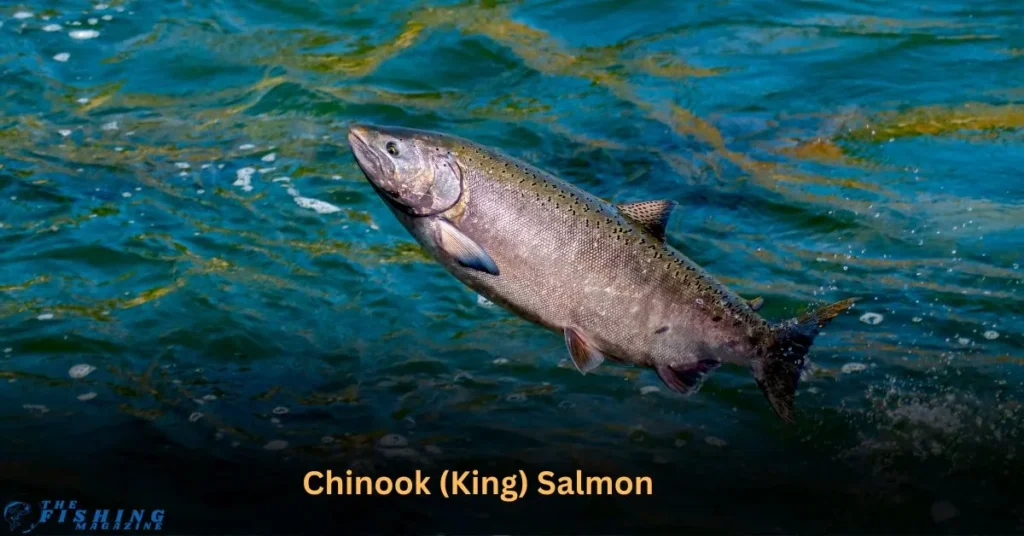
2. Coho (Silver) Salmon
Overview:
Coho salmon, or Silver salmon, are known for their acrobatic fights and aggressive strikes. They typically weigh between 8 and 12 pounds, although larger specimens are not uncommon. Coho salmon are a favorite among anglers for their feisty nature and the quality of their meat.
Best Time to Catch:
Coho salmon runs generally occur from late July through September, with peak season in August and early September.
Where to Fish:
Top locations for Coho salmon include the Kenai River, the Sitka area, and the waters around Kodiak Island. Coastal streams and rivers throughout Southeast Alaska are also prime spots for Silvers.
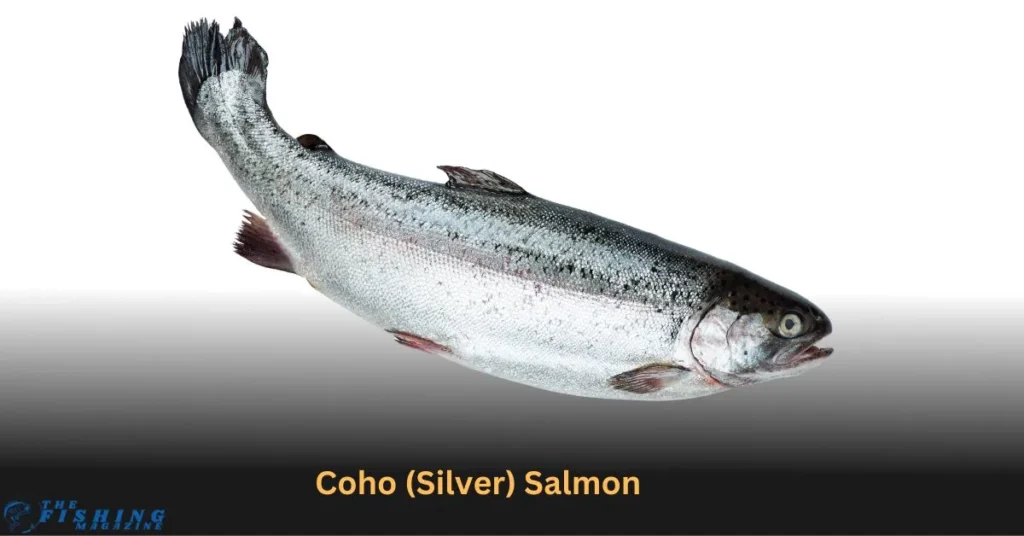
3. Sockeye (Red) Salmon
Overview:
Sockeye salmon, or Red salmon, are highly valued for their rich, flavorful meat. They are smaller than Kings and Silvers, typically weighing between 4 and 8 pounds, but they make up for their size with their incredible stamina and the sheer numbers in which they return to spawn.
Best Time to Catch:
Sockeye salmon runs typically occur from mid-June to late July, with peak season varying by location.
Where to Fish:
The Kenai River is renowned for its massive Sockeye runs, but other great spots include the Copper River, the Bristol Bay area, and the Russian River.
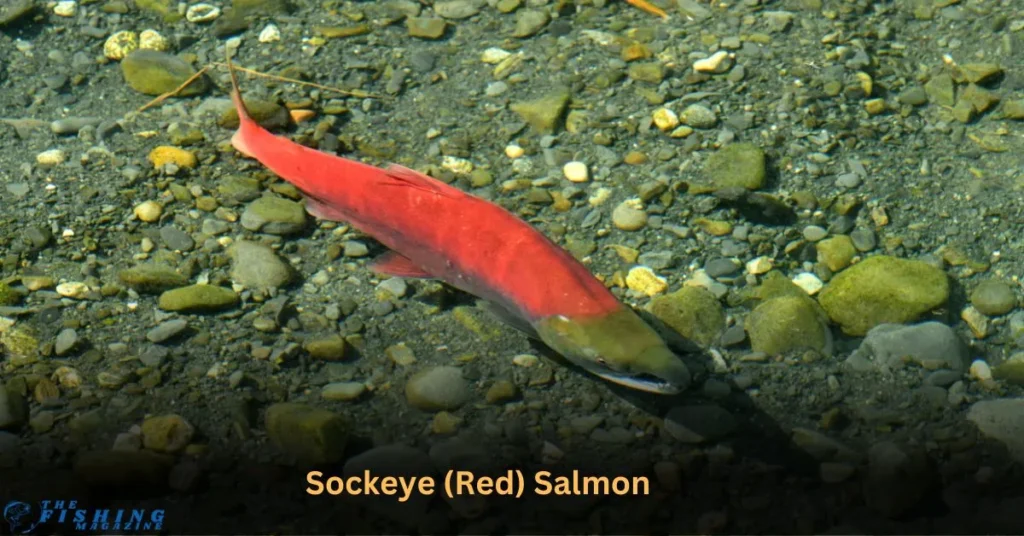
4. Pink (Humpy) Salmon
Overview:
Pink salmon, also known as Humpy salmon, are the smallest of Alaska’s salmon species, averaging between 3 and 5 pounds. They are abundant and provide a great fishing experience for beginners and families. Pink salmon are known for their distinctive humpback that develops during spawning.
Best Time to Catch:
Pink salmon runs occur every other year, with the strongest runs in even-numbered years. The peak season is from mid-July to late August.
Where to Fish:
Pink salmon are found in abundance throughout Southeast Alaska, Prince William Sound, and the rivers and streams of the Kenai Peninsula.

5. Chum (Dog) Salmon
Overview:
Chum salmon, also known as Dog salmon, are less sought after than other species, but they are still a worthy catch. They are known for their strong runs and sharp teeth. Chum salmon typically weigh between 8 and 15 pounds.
Best Time to Catch:
Chum salmon runs occur from June through September, with peak season in July and August.
Where to Fish:
Chum salmon are found throughout Alaska, with notable runs in the Yukon River, Kuskokwim River, and Southeast Alaska.

Best Times for Salmon Fishing in Alaska
Spring (May – June)
Spring marks the beginning of the salmon fishing season in Alaska. King salmon are the first to arrive, with runs beginning in May and peaking in June. This is an excellent time to target Chinook salmon, especially in rivers like the Kenai and Kasilof.
Summer (July – August)
Summer is the prime time for salmon fishing in Alaska, with all five species of salmon making their way to the rivers and streams. Sockeye salmon dominate the early summer months, followed by Coho and Pink salmon later in the season. This is the best time to experience the full spectrum of Alaska’s salmon runs.
Fall (September – October)
Fall brings the tail end of the salmon runs, with Coho salmon providing some of the best fishing opportunities. The cooler weather and fewer crowds make this an ideal time for anglers looking for a more peaceful fishing experience.
Winter (November – April)
While winter is not traditionally associated with salmon fishing, some areas, particularly in Southeast Alaska, offer winter fishing opportunities for King salmon. These “winter Kings” are smaller than their summer counterparts but still provide a thrilling fishing experience.
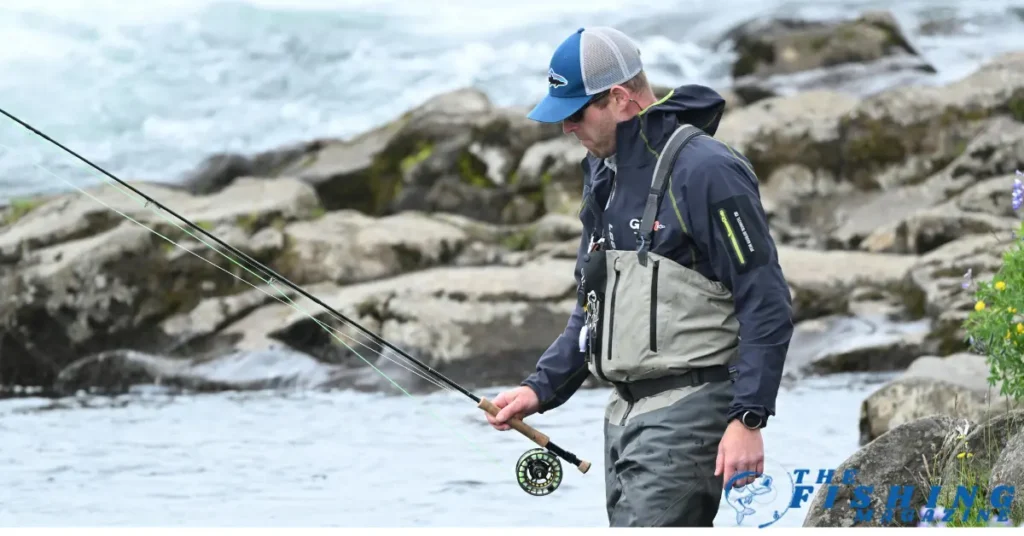
Choosing the Right Gear for Salmon Fishing
Rods and Reels
When it comes to salmon fishing in Alaska, having the right gear is essential. Here’s what you’ll need:
- Rods: A medium to heavy-action rod, typically 8-10 feet in length, is ideal for salmon fishing. The longer rod provides better leverage and casting distance, while the heavy action gives you the strength to handle large fish.
- Reels: A high-quality spinning or baitcasting reel with a strong drag system is recommended. Reels should have a line capacity of at least 200 yards to handle the long runs that salmon are known for.
Line and Leaders
- Main Line: Use a 20-30 pound test braided or monofilament line. Braided lines offer superior strength and sensitivity, while monofilament lines provide more stretch, which can be useful when fighting large fish.
- Leader: A 15-25 pound test fluorocarbon leader is recommended. Fluorocarbon is nearly invisible underwater, making it less likely to spook wary salmon.
Bait and Lures
The choice of bait and lures depends on the species of salmon you’re targeting and the fishing conditions:
- Bait: Salmon roe (eggs) is one of the most effective baits for salmon fishing. Other options include herring, shrimp, and squid.
- Lures: Popular lures for salmon fishing include spoons, spinners, and plugs. These lures mimic the movement of baitfish and can entice aggressive strikes from salmon.
Other Essential Gear
- Waders: If you’re fishing in rivers or streams, a good pair of chest waders is essential to keep you dry and comfortable.
- Polarized Sunglasses: Polarized sunglasses reduce glare on the water, allowing you to see fish and structure more clearly.
- Tackle Box: A well-organized tackle box with a variety of hooks, weights, and other terminal tackle is a must-have for any fishing trip.
Top Salmon Fishing Spots in Alaska
Kenai River
The Kenai River is perhaps the most famous salmon fishing destination in Alaska. Known for producing record-breaking King salmon, the Kenai River also offers excellent fishing for Sockeye and Coho salmon. The river is easily accessible, making it a popular choice for both guided and self-guided fishing trips.
Bristol Bay
Bristol Bay is home to one of the largest Sockeye salmon runs in the world. Every year, millions of Sockeye return to the rivers and streams of Bristol Bay, providing some of the best fishing opportunities on the planet. The area is remote and often requires fly-in access, but the rewards are well worth the effort.
Kasilof River
Located on the Kenai Peninsula, the Kasilof River is a prime spot for fishing King salmon, particularly in early summer. The Kasilof offers a more relaxed and less crowded alternative to the Kenai River, with excellent fishing opportunities for both Chinook and Coho salmon.
Kodiak Island
Kodiak Island is known for its abundant Coho salmon runs and offers a wide range of fishing options, from remote rivers to coastal waters. The island’s rugged
beauty and abundant wildlife make it a top choice for anglers looking for a true Alaskan adventure.
Southeast Alaska
Southeast Alaska is a salmon fishing paradise, with countless rivers, streams, and coastal areas teeming with fish. The region is particularly famous for its Pink and Chum salmon runs, but it also offers excellent opportunities for targeting King and Coho salmon.
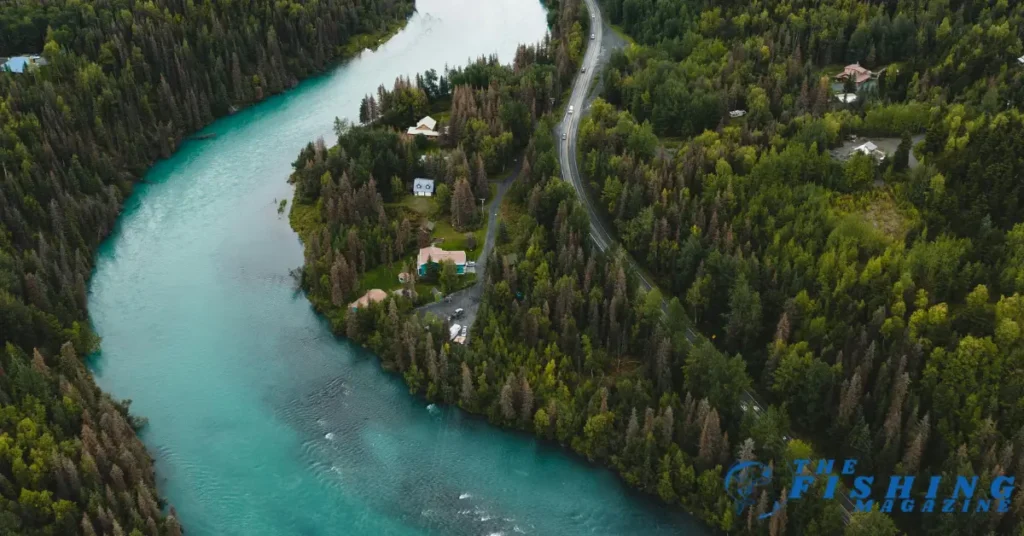
Tips and Techniques for Successful Salmon Fishing
Understanding Salmon Behavior
Understanding the behavior of salmon is key to a successful fishing trip. Salmon are anadromous, meaning they spend most of their lives in the ocean but return to freshwater to spawn. They are driven by instinct to return to their natal streams, often traveling hundreds of miles to reach their spawning grounds.
Reading the Water
Salmon tend to hold in specific areas of the river, such as deep pools, riffles, and eddies. Learning to read the water and identify these holding areas will increase your chances of success. Look for areas where the current slows down, as salmon often rest in these spots during their journey upstream.
Timing Your Casts
Timing is crucial when salmon fishing. Salmon are most active during early morning and late evening hours, so plan your fishing trips accordingly. Pay attention to the tides as well, especially when fishing in coastal areas, as salmon often move with the changing tides.
Patience and Persistence
Salmon fishing requires patience and persistence. These fish can be elusive, and it may take time to find the right spot and the right technique. Don’t be discouraged if you don’t catch fish right away; keep trying different spots, lures, and techniques until you find what works.
Conservation and Responsible Fishing Practices
Understanding Regulations
Alaska has strict regulations in place to protect its salmon populations and ensure sustainable fishing practices. These regulations include size limits, bag limits, and specific rules for catch and release. It’s essential to familiarize yourself with these regulations before your trip and to follow them closely.
Catch and Release Practices
If you choose to practice catch and release, it’s important to do so in a way that minimizes harm to the fish. Use barbless hooks, handle the fish gently, and release it quickly back into the water. Avoid lifting the fish out of the water if possible, and never squeeze the fish or hold it by the gills.
Supporting Conservation Efforts
By following responsible fishing practices and supporting local conservation efforts, you can help ensure that Alaska’s salmon populations remain healthy for future generations. Consider making a donation to organizations that work to protect salmon habitats and educate others about sustainable fishing practices.
Salmon Fishing in Alaska Charters
Experience the Thrill of Salmon Fishing in Alaska
Alaska is a dream destination for anglers, offering some of the world’s best salmon fishing. From the powerful King Salmon (Chinook) to the acrobatic Silver Salmon (Coho), Alaska’s rivers and coastal waters are teeming with opportunities for an unforgettable fishing adventure. Whether you’re a seasoned angler or a beginner, booking a salmon fishing charter in Alaska ensures expert guidance, top-tier equipment, and access to prime fishing spots.
Best Locations for Salmon Fishing in Alaska
Alaska boasts numerous hotspots for salmon fishing, including:
- Kenai River – Famous for trophy-sized King Salmon
- Bristol Bay – Renowned for its massive Sockeye Salmon runs
- Seward – Offers deep-sea salmon fishing in Resurrection Bay
- Kodiak Island – Ideal for remote and abundant salmon fishing
- Kasilof River – Known for peaceful drift boat fishing for Sockeye and King Salmon
- Prince William Sound – A top destination for Silver Salmon fishing
Whether you prefer fly fishing, trolling, or drift fishing, these locations provide incredible opportunities to land a trophy catch.
Why Choose an Alaska Salmon Fishing Charter?
Booking a professional fishing charter enhances your chances of success. Here’s why:
Experienced Guides Local captains know the best spots and techniques
Top-Quality Equipment No need to bring your own rods, reels, or bait
Regulation Compliance Charters ensure adherence to Alaska fishing laws
Scenic Adventures Enjoy breathtaking landscapes and wildlife sightings
Many charters offer full-day and half-day trips, catering to different skill levels and preferences.
Delicious Salmon Recipes: Cook Your Fresh Catch
Once you’ve reeled in a prized Alaskan salmon, it’s time to cook it. Here are two must-try recipes:
1. Grilled Alaska Salmon with Garlic Butter
Ingredients:
- 2 fresh salmon fillets
- 3 tbsp melted butter
- 2 cloves garlic (minced)
- 1 tbsp lemon juice
- 1 tsp black pepper
- ½ tsp salt
- Fresh dill (optional)
Instructions:
- Preheat the grill to medium-high heat.
- Mix butter, garlic, lemon juice, salt, and pepper.
- Brush the mixture over the salmon fillets.
- Grill for 4-5 minutes per side, until flaky.
- Garnish with fresh dill and serve.
2. Baked Honey Soy Salmon
Ingredients:
- 2 salmon fillets
- ¼ cup soy sauce
- 2 tbsp honey
- 1 tbsp olive oil
- 1 tsp minced ginger
- ½ tsp red pepper flakes (optional)
Instructions:
- Preheat the oven to 375°F.
- Mix soy sauce, honey, olive oil, ginger, and red pepper flakes.
- Marinate the salmon for 20 minutes.
- Bake for 12-15 minutes, or until the salmon flakes easily.
- Serve with rice or roasted vegetables.
FAQs About Salmon Fishing in Alaska
1. What is the best time of year to fish for salmon in Alaska?
The best time to fish for salmon in Alaska varies by species, but generally, the prime fishing season is from May to September, with peak runs occurring in June and July.
2. Do I need a fishing license to fish for salmon in Alaska?
Yes, a valid Alaska fishing license is required for all anglers over the age of 16. Additional stamps or permits may be required for specific species, such as King salmon.
3. Can I fish for salmon on my own, or do I need a guide?
While it’s possible to fish for salmon on your own, hiring a guide is highly recommended, especially if you’re unfamiliar with the area. Guides have local knowledge, access to the best fishing spots, and can provide the necessary gear and equipment.
4. What should I bring on a salmon fishing trip in Alaska?
Be sure to bring appropriate clothing for the weather, including waterproof layers, a hat, and sunscreen. You’ll also need your fishing gear, a valid fishing license, and any necessary permits. If you’re fishing with a guide, they will usually provide most of the gear and equipment.
5. Is salmon fishing in Alaska suitable for beginners?
Yes, salmon fishing in Alaska is suitable for anglers of all skill levels. Pink salmon, in particular, are abundant and provide a great introduction to salmon fishing for beginners. Guided trips are a good option for those new to the sport.
Conclusion
Salmon fishing in Alaska is more than just a pastime; it’s a quintessential Alaskan experience that combines the thrill of the catch with the breathtaking beauty of the state’s natural landscapes. Whether you’re after the trophy-sized King salmon or the feisty Coho, Alaska offers something for every angler.
With the right preparation, knowledge, and respect for the environment, you can make your Alaskan salmon fishing adventure one for the ages. So gear up, head to the Last Frontier, and get ready to experience some of the best fishing the world has to offer.

